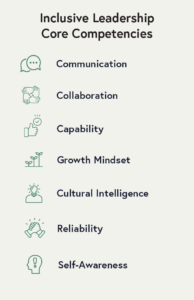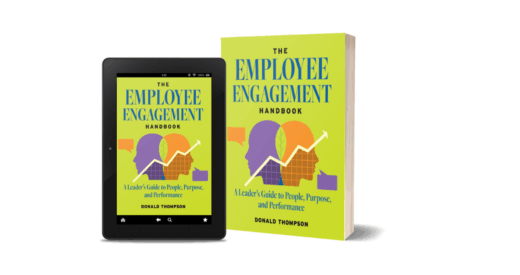Anyone who has spent time leading a team knows that leadership can be a solitary pursuit. As you rise in the organization, you are less likely to get transparent, direct feedback on your performance. This absence of feedback limits the information leaders need to improve their own leadership skills, and teams suffer as a result.
The gap between what executives think about themselves and what their teams think is not a new issue. In the 1950s, Esso Research and Engineering (now known as Exxon Mobil) adapted a feedback system used in World War II so that managers could be rated by their managers, colleagues and subordinates. 360-degree assessments are now mainstream and are estimated to be in use by 90% of Fortune 1000 companies.
The challenge with 360 reviews is that they were conceived during an era where most leadership models were built to optimize mass production. Organizational hierarchy was established to create efficiency in work where physical goods were created at scale. The world has changed and the assessments that examine leadership abilities need to evolve as well.
Using 360 Reviews to Assess Leaders

No single leader has the foresight to lead in today’s complex environment without trusted data from team members. 360-degree reviews focus on individual growth and ignore how the executive team approaches challenges as a unit. But, by assessing the strengths and challenges of the whole leadership team, the group can elevate their performance by improving collaboration, creativity, and relationship building. This synergy is vital to sustainable success, because even the best leader can’t outperform a high-functioning team.
360 assessments highlight individual strengths and weaknesses, and companies report higher retention among leaders who participate in 360 reviews. However, the assessment tool does have limitations. Because feedback comes from a variety of sources, it may be less useful because it may not consider the specific challenges or complexities a senior leader faces in their role, especially among a team of peers. Receiving feedback from multiple sources without context can also create frustration, since the feedback may not be actionable.
TDM LeaderView Examines the Whole Team
The Diversity Movement’s inclusive leadership development solution, TDM LeaderView, focuses on the whole team’s development, not merely its individual members. Created by business leaders in consultation with PhDs in Organizational Psychology, LeaderView’s peer assessment approach is built on TDM’s ACT (assess, coach, train) model. The mix of skill evaluation, analytics, consultation, and coaching creates a framework to promote personal and collective growth. Unlike traditional 360s, LeaderView focuses on the senior leadership team and how they work together. This can be used along with other individual assessments to provide a more well-rounded picture of team performance.
During the LeaderView engagement, participants evaluate themselves, their colleagues, and the entire team. Data is sourced from people who are directly familiar with organizational goals and challenges, the demands of leading a team, and how the team functions as a unit. The power of TDM LeaderView is that it enables teams to assess group dynamics and gives them insightful data so they can build the core competencies needed to navigate change, develop a culture of collaboration, and enhance productivity.

Instead of focusing on how each individual is performing in isolation, LeaderView answers the team’s most important questions:
- Are we communicating and collaborating effectively as a leadership team?
- How do we operate as a group across locations, cultures, and time zones?
- How do we connect as individuals in ways that make the team stronger and more efficient?
- How can we create an inclusive environment where people feel empowered to share their ideas, opinions, and perspectives?
- How do we define and demonstrate trust as a team?
- What barriers exist that hinder connection, collaboration, and performance across the team?
- What are our team strengths and areas of opportunity?
- What perspectives are we missing in our team?
Some executives have told us that the successes they had hoped for with traditional 360-degree review programs never fully materialized. For leaders who have had poor experiences with these assessments in the past, TDM LeaderView’s focus on team behaviors and team performance is a welcome change.
Focusing on Team Growth and Development
 LeaderView examines team strengths and gaps across seven core competencies that are part of The Diversity Movement’s inclusive leadership development framework: Communication, Collaboration, Capability, Growth Mindset, Cultural Intelligence, Reliability, and Self-Awareness. Each person is evaluated in each of these areas, but the team is also analyzed according to the competencies.
LeaderView examines team strengths and gaps across seven core competencies that are part of The Diversity Movement’s inclusive leadership development framework: Communication, Collaboration, Capability, Growth Mindset, Cultural Intelligence, Reliability, and Self-Awareness. Each person is evaluated in each of these areas, but the team is also analyzed according to the competencies.
Results are shared with individuals during one-on-one sessions with trained leadership coaches. Participants receive personalized feedback, guidance on what areas to focus on, and actionable strategies to strengthen weak areas.
Every team is unique, so inclusive leadership training is individualized for each team and their specific requirements. Every team receives customized learning resources that help participants practice communication and improve their inclusive leadership skills. Following the one-on-one coaching sessions, facilitated workshops with the entire team continue the learning and growth by exploring how each team member can help their colleagues improve.
“The ability to grow as a leader through self-assessment and peer feedback is the key to progress with LeaderView,” explains Andy DeRoin, Product Manager at The Diversity Movement and part of the team that created the tool. “No one person embodies every leadership facet, so each team member should work in harmony to establish proficiency. Strengths reinforce strengths, thus weaving a tapestry of trust and expertise. The data and learnings from the assessment are reinforced through daily practice that amplifies communication, collaboration, trust, and efficiency.”
Promoting a Culture of Feedback and Trust
Incorporating leadership assessments in an inclusive leadership development program can be a valuable tool for senior leaders and boards of directors. And when those assessments focus on the holistic experience of the executive leadership team, transformational growth is possible.
In today’s volatile global economy, executive leadership teams are increasingly focused on sustainable growth, which relies on “networked leadership teams [to] steer the organization,” according to a report on the future of leadership from McKinsey. However, a persistent challenge for executives is to create an environment where better teamwork is organic. “Companies seeking to thrive now still need leaders who are accountable for their individual roles,” the report states, “but leadership itself resides in the teams of leaders acting in service to the organization.”
Making time for regular, periodic assessments for everyone signals a commitment to build an inclusive culture shaped by open feedback and continuous improvement. When leaders actively seek feedback and demonstrate a willingness to improve, they can build higher degrees of trust and engagement among one another. By assessing team dynamics to strengthen team functioning, leaders can create a culture of continuous learning and growth, enabling the organization to be more innovative, productive and profitable.
Join the ranks of forward-thinking organizations that are enhancing their inclusive leadership skills to build stronger executive and managerial teams. Contact us today to learn how TDM LeaderView can transform your team and allow your organization to thrive.
Kurt Merriweather, CDE, is an accomplished product strategist and business executive. He is co-founder and Vice President of Innovation at The Diversity Movement. Connect with him on Linkedin.




